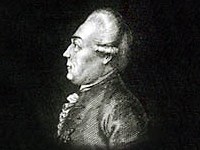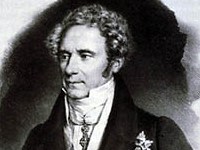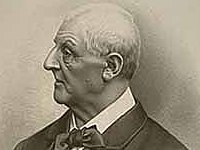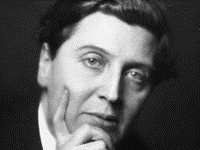Like most of the other specialised departments of the Austrian National Library, the Department of Music did not originate as a “foundation”, but in the course of a crystallisation process over centuries within the holdings of the former Imperial Court Library.
Only in 1920, when there was a relocation into the Albertina Building, did the phase of independence begin and the transformation into a modern library for scholarly research, which is how the Department of Music is today presented to the public in conjunction with its function as Austria’s biggest national music archives and “a treasury of autographs”.
The department of Music underwent a comprehensive renewal of its buildings and its organisation in 2005, when it was transferred to its new site in the Palais Mollard (1010 Wien, Herrengasse 9), and simultaneously placed at public disposal after years of preparation an online catalogue of its total holdings.
History
A review of its history shows that musical items were being acquired on a grand scale for the Court Library long before the institutionalisation of the Department of Music. A first growth of extraordinary importance was marked by the year 1655 when Albert Fugger’s library was acquired by Mathias Mauchter for Emperor Ferdinand III. It contained many musical works, particularly products of the early period of printing of notes, so that today the most important and probably the only extant remains of the famous Fugger musical library are to be found in the Austrian National Library. More than 200 library items from the property of Philipp Eduard Fugger (1546-1618) with the bookmark P.E.F., as well as smaller groups of prints and manuscripts can be traced back to Raimund Fugger the Elder, through his son Georg, his grandson Philipp Eduard, down to his grandson Albert, from whom they went into the Imperial Court in Vienna.
The first indications of a targeted concentration on musical matters are to be found in the activities of Gottfried van Swietens, who was the prefect of the Court Library from 1777 till 1803. Van Swieten had got to know the music of Georg Friedrich Händel when he was a diplomat in England. He was himself a composer, he collected music, and in 1785 he founded the “Society of Associated Cavaliers” ("Gesellschaft der associierten Cavaliers“), which became an important part of contemporary musical life in Vienna with productions of oratorios. It is obvious that van Swieten, whose affinity for music was also expressed in his friendships with Joseph Haydn and Wolfgang Amadeus Mozart, set the tone in that direction as the leader of the Court Library.
A decisive advance in the field of music came about in the first half of the 19th century. Moritz Earl of Dietrichstein, from 1819 "Court Music Earl", had the task of looking after the Court “kapelle” (orchestra), the courtly ecclesiastical music and court worldly music, of conducting the boys’ choir and directing the activities of artists, and of overseeing the Court Music Archives. When Dietrichstein was removed by Emperor Franz I from his former positions and appointed prefect of the Court Library, he immediately had the archival holdings of the Court Music Archives transferred to the Library. The size and value of that collection were very substantial because from the middle of the 17th till the middle of the 18th century the Habsburg Emperors, who themselves were composers and lovers of music, Ferdinand III, Leopold I, Joseph I, and Karl VI, had provided for an intense cultivation of music.
Important Holdings
Among the most outstanding groups of holdings are to be counted the manuscript scores wrapped in white parchment from the Bedroom Library of Leopold I ("bibliotheca cubicularis“). Included also are the scores from the reign of Karl VI, uniformly wrapped in brown leather: they convey a wide selection of the music cultivated at the Viennese Court, in which above all Italian operas and the oratorio were first in popularity. At the beginning of the 19th century “historicism” was in vogue, giving special prominence to the music of former periods and the original manuscripts of the composers as testimonials of timeless artistic achievements. Raphael Georg Kiesewetter must be mentioned as a pioneer of musical historicism. From 1816 on he put on historical house concerts and systematically built up his music collection (with emphasis on Dutch polyphony in the 16th century) and bequeathed it to the Court Library.
In the following three decades the prefects of the Court Library emphatically accentuated the acquisition of printed materials and showed little interest in cultivating musical monuments. The strength of the Department of Music from that period is mainly in a comprehensive collection of sources of musical practice in the late 18th and the whole 19th century. Thousands of manuscripts, both autographs and copies, document the work of the so-called “minor masters” whose creations are today mostly forgotten, though they provided the compositorial “humus” from which sprang the towering works of the great men of the age of glory in the history of music.
The acquisition of the entire works of Anton Bruckner was for the Department of Music a particular stroke of good fortune. Not only all of Bruckner’s main works but also biographical material of many types (calendar notes, letters, documents) amount in their entirety to a unique “Bruckner Archives”.
A stroke of good luck was the acquisition of the estate of Alban Berg, handed over in 1974 to the Department of Music by Helen Berg, the composer’s widow. The approximately 3,000 inventory items include music manuscripts, sketches, notepads, and letters. That means that the life’s work of at least one of the main representatives of the “Second Viennese School” is present.
The second great acquisition of the 20th century is linked to the name of Anthony van Hoboken. Hoboken’s collection of about 8,000 first or early prints of the great masters from Bach to Brahms, which make up in their completeness the world’s largest privately built up holdings of this kind, was bought in 1974 by the Republic of Austria.








